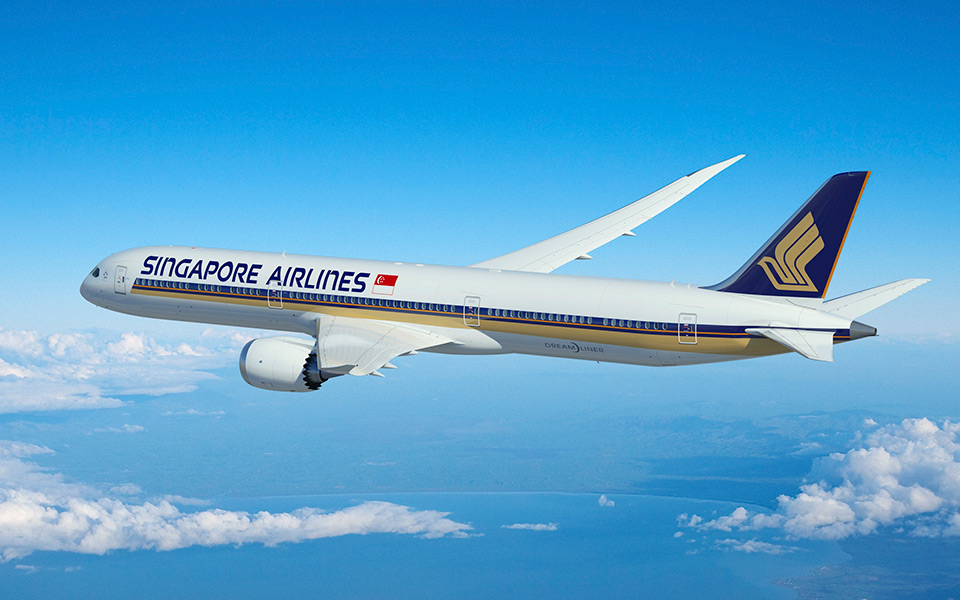Leeham News and Analysis
There's more to real news than a news release.
 Leeham News and Analysis
Leeham News and Analysis
- Bjorn’s Corner: New engine development. Part 5. Turbofan design problems April 26, 2024
- Airbus 1Q2024 results: Airbus CEO: “A350 in-service experience drives positive reputation and orders” April 25, 2024
- A350-1000 or 777-9? Part 3 April 25, 2024
- Boeing CEO promises company is turning around…again April 24, 2024
- Solid start for stand-alone GE Aerospace despite cuts to LEAP output April 23, 2024
Assessing the Dubai Air Show
Subscription Required
Introduction
Nov. 20, 2017, © Leeham Co.: The Dubai Air Show was a clear win for Boeing, despite the last minute 430 airplane commitment from the Indigo Partners group.
The “MENA” region, for Middle East and North Africa, has been the staple of the Dubai Air Show.
There have been occasional smatterings of peripheral regions tossed in, but commitments from US companies (except lessors doing business worldwide) have not been a regular feature.
Summary
- Boeing swept the MENA orders and commitments.
- Emirates order for 40 787-10s begin delivery from 2022 and may be tied to adjustments in 777X delivery rate.
- The lack of the widely expected A380 order from Emirates was a huge embarrassment to Airbus.
- Bombardier, better known for its lack of orders at air shows, landed a good one at Dubai.
Posted on November 20, 2017 by Scott Hamilton
The data behind Emirates’ choice of 787-10
By Bjorn Fehrm
Subscription Required
Introduction
November 16, 2017, © Leeham Co.: Yesterday we outlined the qualitative reasons why the Boeing 787-10 was selected for Emirates’ medium-range routes. Now we put figures behind the words.
We will quantify the weight and drag consequences of the tighter packaging of the 787 and discuss what it’s smaller wing means in field performance from a hot Dubai International Airport.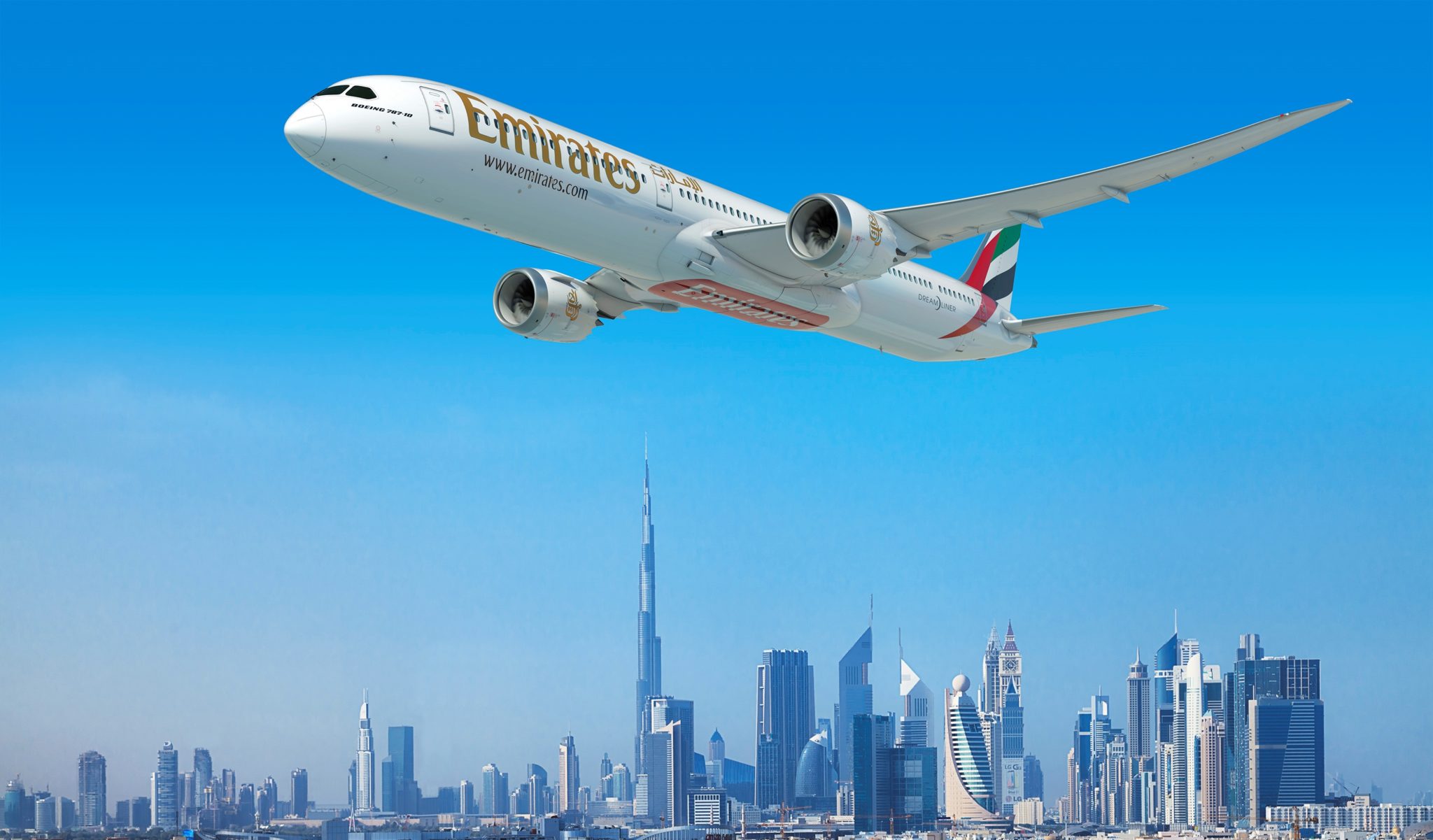
We use our airline performance model to give us the data, flying the aircraft over typical routes.
Summary:
- The A350-900 was designed for flights up to 15 to 20 hours.
- To make these bearable, Airbus decided to offer 18-inch seat width in the nine abreast economy cabin.
- Boeing went another route. It offered a slightly narrower fuselage and let the airlines decide between eight or nine abreast economy.
- Only Japanse ANA and JAL chose the base layout with eight abreast economy (and ANA has since switched to nine abreast economy for new deliveries).
- The result is an aircraft with lower empty weight and fuel burn (everything else being equal).
- For the 787-10, Boeing combined the tighter packaged fuselage with a wing optimised for flights up to 12 hours.
- The 787-10 consequently beats the A350-900 on efficiency for shorter routes.
Posted on November 16, 2017 by Bjorn Fehrm
Airbus’ A330 or Boeing’s 787 for LCC long haul?
By Bjorn Fehrm
Subscription Required
Introduction
November 09, 2017, © Leeham Co.: International Airlines Group’s (IAG) CEO, Willy Walsh, said in an Investor presentation last week “LEVEL (the group’s Long Haul LCC) is as well off with the Airbus A330-200 as with a Boeing 787.” He said the lower capital costs of the A330 compensates for the Dreamliner’s lower fuel burn.
As a proof, Walsh said IAG had run flight plans with their LEVEL A330 flying the same mission as a Norwegian 787 and configured as the Norwegian aircraft. The difference in fuel burn Barcelona-Los Angeles would be 6t. But this is easily compensated by the difference in capital costs.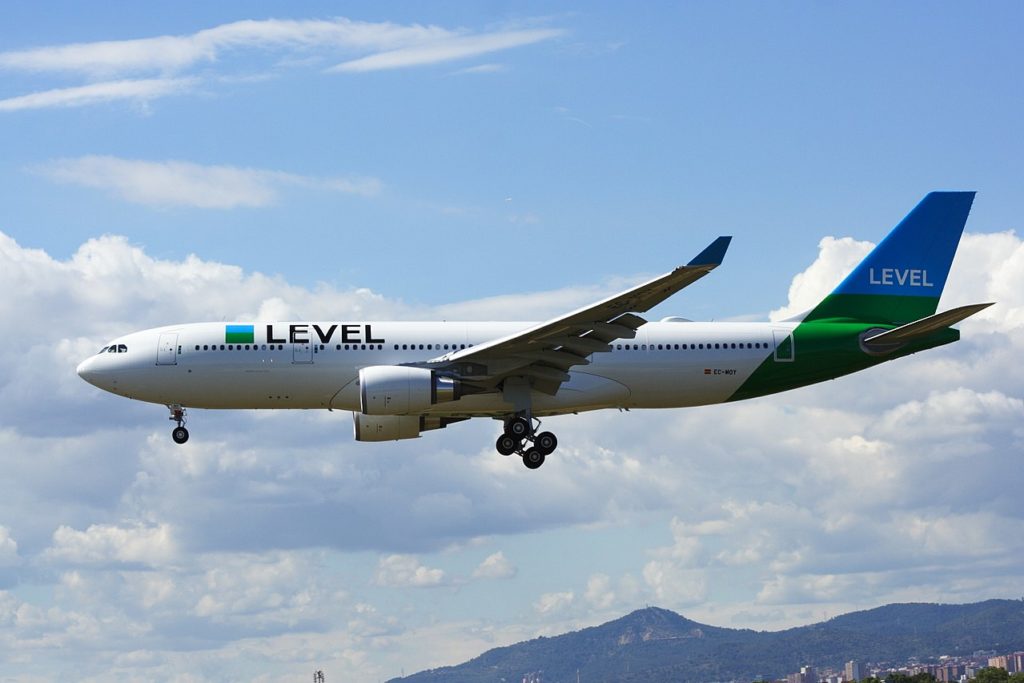 Going forward, LEVEL has the possibility to switch to the 787, said Walsh. Our reaction is; why not include the A330neo in this discussion?
Going forward, LEVEL has the possibility to switch to the 787, said Walsh. Our reaction is; why not include the A330neo in this discussion?
We decided to verify Walsh statements and also check why an A330neo wouldn’t be more appropriate than a 787.
Summary:
- The statement by Walsh about the difference in fuel burn between the A330 and the Dreamliner is correct.
- However, fuel cost is no longer the dominant cost in airline operations.
- We compare the total Cash Operating Costs (COCs) of the aircraft, then we view whether the COC difference between the types can be compensated with capital cost differences.
Posted on November 9, 2017 by Bjorn Fehrm
Airbus, Airlines, Boeing, GE Aviation, Premium, Rolls-Royce
787, 787-8, A330, A330-200, A330-800, A330neo, Airbus, Boeing, Rolls-Royce
CSeries effect on Airbus, Boeing product strategies
Subscription Required
Introduction
Nov. 6, 2017, © Leeham Co.: Boeing took a pass on assuming ownership of the Bombardier CSeries, according to a report in the Toronto Globe and Mail—the same deal rival Airbus took.
In doing so, Boeing passed on acquiring a new airplane program at pretty much zero risk, no cash investment and no research-and-development cost. The market demand ranges from 4,000 to 6,000, depending on whose study you believe.
Rival Airbus wouldn’t have a response and, given its current turmoil, would have been unlikely to pursue a response.
Instead, Boeing may embark on a risky, high-cost development of the New Midrange Aircraft for which market demand remains a controversy, suppliers are reluctant to take risk-sharing positions and which will almost certainly provoke a response from Airbus.
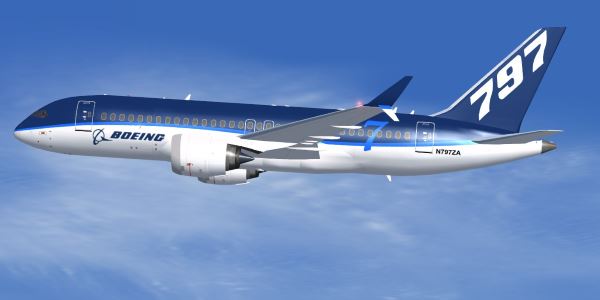
Artist concept of Boeing 797-7. Source: fs2000.org.
Summary
- Boeing says it’s not worried about Airbus stake in CSeries program; it remains satisfied with its product strategy.
- But 100-160 seat sector won’t be covered by a 737 replacement. Airbus has this covered with CSeries.
- New Midmarket Airplane figures into CSeries impact.
Posted on November 6, 2017 by Scott Hamilton
Assessing Alaska Air Group’s fleet requirements
Subscription Required
Introduction
Oct. 27, 2017, © Leeham Co.: Alaska Airlines Group (AAG) acquired Virgin America (VA) and with it, Virgin’s exclusive fleet of Airbus A320ceos with orders for A320neos and A321neos.
With Alaska Airlines (AS) being an all Boeing 737 operator, the question immediately arose: what will AAG do with the Virgin fleet.
AAG CEO Brad Tilden strongly hinted the Airbuses will eventually go away. But on earnings calls, officials say they’re studying the matter and there’s plenty of time before they must decide since the first leases don’t begin rolling off until 2019.
Even if AAG decides to consolidate around the 737—an issue still very much in doubt—it won’t be any time soon.
The A320 leases continue to 2024. The leases for the new A321neos go longer: these are 12-year leases and they are non-cancellable. The A321neos will be around at least until 2030.
Posted on October 30, 2017 by Scott Hamilton
Singapore airlines increases order for 787-10
By Bjorn Fehrm
Subscription Required
Introduction
Oct. 26, 2017, © Leeham Co.: Singapore airlines increased its order for Boeing’s 787-10 from 20 to 39 this week. The first aircraft for the airline rolled off the assembly earlier this month. It will now be prepared for delivery, flying out to Singapore on the new year.
The 787-10 is essentially a 787-9 which can take more passengers. By it, the cost per passenger goes down.
How much better? By comparing with the closest competitor, Airbus A350-900, we can learn by how much.
We will use our performance model to compare the aircraft. It’s a bit apples and oranges, because the A350-900 is a long-range airliner with 8,000nm range, and the 787-10 sacrifices the range of the -9 variant to carry more passengers.
But it’s interesting to see how this sacrifice pays off in efficiency on the type of routes the 787-10 was designed for.
Summary:
- The 787-10 is optimized to carry 330 passengers out to 6,400nm. It does this with a well-packaged fuselage and the wing of the smaller 787-9.
- The A350-900 is larger. It has a larger wing, to fly longer. And its fuselage diameter brings more passenger comfort, especially in economy.
- With both built with weight-saving carbon fiber technology, it’s not surprising the 787-10 is lighter, despite holding a row more of passengers.
- Weight and size always cost fuel. The difference in fuel burn is consistent with the difference in aircraft capabilities.
Posted on October 26, 2017 by Bjorn Fehrm
Boeing-Embraer venture in response to Airbus-Bombardier? Don’t count on it
Subscription Required
Introduction
Oct. 23, 2017, © Leeham Co.: With the tie-up announced last Monday between Airbus and Bombardier for the CSeries, speculation immediately turned to whether Boeing and Embraer will join forces in some fashion in response.
The speculation is natural. Boeing and Embraer have had several commercial agreements, mostly on the defense side but also in eco-research. But as yet, there hasn’t been a tie-up involving the successful E-Jet program.

Embraer E195-E2.
Don’t look for anything soon that would be a meaningful response to the Airbus-CSeries deal.
Summary
- Boeing needs a response in the 125-150 seat sector in which the 737-7 MAX languishes and with which the CS300 competes.
- Boeing has no product offering in the 100-125 seat sector. Embraer doesn’t need Boeing’s help here. The E175-E1 continues to sell and it meets US Scope Clauses.
- The Embraer E2 program’s first delivery is April next year.
- Embraer isn’t about to proceed with a new airplane program in the 100-150 seat sector, which is Boeing’s product gap.
Posted on October 23, 2017 by Scott Hamilton
Economics of CS300 versus A319neo and 737 MAX 7
By Bjorn Fehrm
Subscription Required
Introduction
October 18, 2017, ©. Leeham Co: We looked at what Airbus got when it acquired Bombardier’s CSeries yesterday. Now we continue the analysis by looking at the economics of Bombardier’s CS300 versus Airbus A319neo and Boeing 737 MAX 7.
The CS300 has entered service and A319neo is flying in tests. The 737 MAX 7 will fly next year, for a service entry 2019.
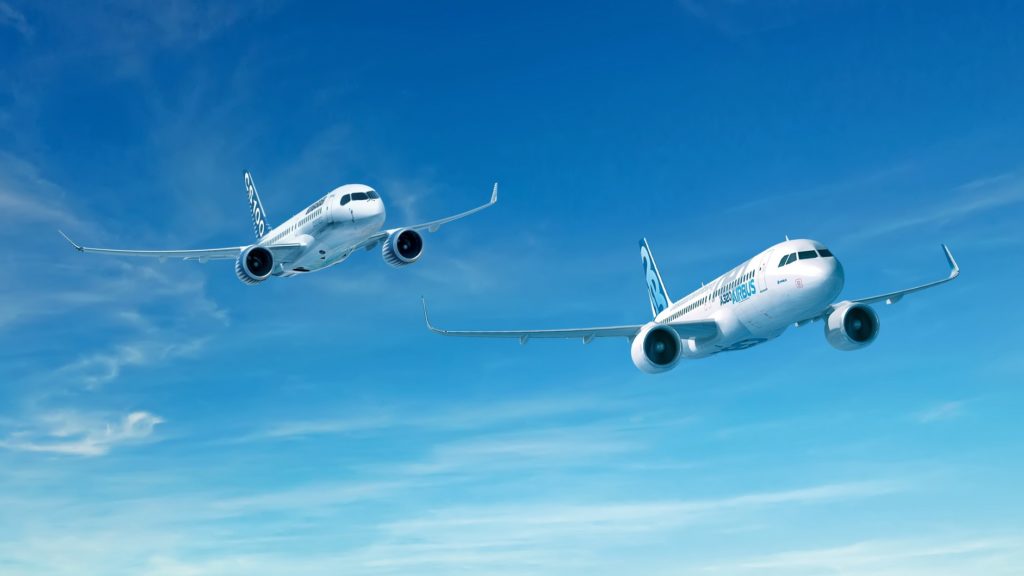 We use our aircraft performance model to compare the aircraft.
We use our aircraft performance model to compare the aircraft.
Summary:
- The A319neo has 126 seats in our normalized domestic cabin, the CS300 132 seats and the 737 MAX 7 138 seats.
- The CSeries is more fuel efficient, both on a trip basis and on a per seat basis, than the smaller A319neo and the larger 737 MAX 7.
- On a total cost basis, the CS300 is the lower cost aircraft (as long as normal net pricing prevails, it’s best to add). Read more
Posted on October 19, 2017 by Bjorn Fehrm
Trump decertifies Iran nuke deal, throws Airbus, Boeing orders in doubt
Subscription Required
Introduction
Oct. 16, 2017, © Leeham Co.: President Donald Trump announced Friday he will decertify the Iran nuclear deal, throwing into doubt a host of related commercial deals, including huge aircraft orders.

Iran Air Airbus A330. Photo via Google.
Trump hasn’t gone so far as to withdraw from the pact, but he still threatens to do so unless Congress makes changes he wants.
Here in the US, focus is, of course, on the commitment by Iran for Boeing aircraft—none of which are firm contracts, but “commitments” to order.
Of less focus here, if any, is on the outstanding orders placed by Iran for Airbus and ATR aircraft, which are subject to US licensing.
Summary
- 30 Boeing 777s, including 15 Classics are at stake.
- 50 Boeing 737 MAXes to Iran Air and 30 to Iran Asesman are also at stake.
- ATR has 11 aircraft scheduled for delivery in 2018.
- Airbus sold 114 A320s/321s, A330s and A350s to Iran Air. A few white tails already have been delivered.
Posted on October 16, 2017 by Scott Hamilton
Airbus, Airlines, ATR, Boeing, CFM, GE Aviation, Premium, Rolls-Royce
737 MAX, 777 Classic, 777X, A320NEO, A321, A330neo, A350, Airbus, ATR, ATR-72, Boeing, CFM, GE Aviation, Iran Air, Iran Aseman, Rolls-Royce
Boeing’s Bold Ambition, Part 2
Subscription Required
Introduction
Oct. 9, 2017, © Leeham Co.: When Boeing launched the 787 program in 2003, an after-market maintenance program called Gold Care followed.
It wasn’t successful. Few customers signed up for it.

Stan Deal, CEO of Boeing Global Services.
But the lessons learned are important for Boeing’s drive to vastly expand its presence in the global commercial airplane after-market business.
Boeing Commercial Airplanes and Boeing Defense, Space & Security (and the latter’s predecessor, Integrated Defense Systems) provided services to the airlines, lessors and government customers, but now there is a dedicated business unit.
Boeing Global Services was announced nearly one year ago, on Nov. 21. When Boeing reports its third quarter earnings at the end of this month, for the first time revenues and profits for BGS and its predecessors will be a line-item in the earnings statements.
Stan Deal, the CEO of BGS, acknowledged the poor start of Gold Care in an interview with LNC. But from this unhappy experience, Boeing learned what officials hope lays the foundation of a new, robust business.
Summary
- 787 Gold Care didn’t start out well.
- Gold Care is rejigged and rebranded.
- BGS services Airbus aircraft, too.
Posted on October 9, 2017 by Scott Hamilton
Email Subscription
Twitter Updates
My TweetsAssociations
Aviation News-Commercial
Commentaries
Companies-Defense
Resources
YouTube
Archives
- April 2024
- March 2024
- February 2024
- January 2024
- December 2023
- November 2023
- October 2023
- September 2023
- August 2023
- July 2023
- June 2023
- May 2023
- April 2023
- March 2023
- February 2023
- January 2023
- December 2022
- November 2022
- October 2022
- September 2022
- August 2022
- July 2022
- June 2022
- May 2022
- April 2022
- March 2022
- February 2022
- January 2022
- December 2021
- November 2021
- October 2021
- September 2021
- August 2021
- July 2021
- June 2021
- May 2021
- April 2021
- March 2021
- February 2021
- January 2021
- December 2020
- November 2020
- October 2020
- September 2020
- August 2020
- July 2020
- June 2020
- May 2020
- April 2020
- March 2020
- February 2020
- January 2020
- December 2019
- November 2019
- October 2019
- September 2019
- August 2019
- July 2019
- June 2019
- May 2019
- April 2019
- March 2019
- February 2019
- January 2019
- December 2018
- November 2018
- October 2018
- September 2018
- August 2018
- July 2018
- June 2018
- May 2018
- April 2018
- March 2018
- February 2018
- January 2018
- December 2017
- November 2017
- October 2017
- September 2017
- August 2017
- July 2017
- June 2017
- May 2017
- April 2017
- March 2017
- February 2017
- January 2017
- December 2016
- November 2016
- October 2016
- September 2016
- August 2016
- July 2016
- June 2016
- May 2016
- April 2016
- March 2016
- February 2016
- January 2016
- December 2015
- November 2015
- October 2015
- September 2015
- August 2015
- July 2015
- June 2015
- May 2015
- April 2015
- March 2015
- February 2015
- January 2015
- December 2014
- November 2014
- October 2014
- September 2014
- August 2014
- July 2014
- June 2014
- May 2014
- April 2014
- March 2014
- February 2014
- January 2014
- December 2013
- November 2013
- October 2013
- September 2013
- August 2013
- July 2013
- June 2013
- May 2013
- April 2013
- March 2013
- February 2013
- January 2013
- December 2012
- November 2012
- October 2012
- September 2012
- August 2012
- July 2012
- June 2012
- May 2012
- April 2012
- March 2012
- February 2012
- January 2012
- December 2011
- November 2011
- October 2011
- September 2011
- August 2011
- July 2011
- June 2011
- May 2011
- April 2011
- March 2011
- February 2011
- January 2011
- December 2010
- November 2010
- October 2010
- September 2010
- August 2010
- July 2010
- June 2010
- May 2010
- April 2010
- March 2010
- February 2010
- January 2010
- December 2009
- November 2009
- October 2009
- September 2009
- August 2009
- July 2009
- June 2009
- May 2009
- April 2009
- March 2009
- February 2009
- January 2009
- December 2008
- November 2008
- October 2008
- September 2008
- August 2008
- July 2008
- June 2008
- May 2008
- April 2008
- March 2008
- February 2008



